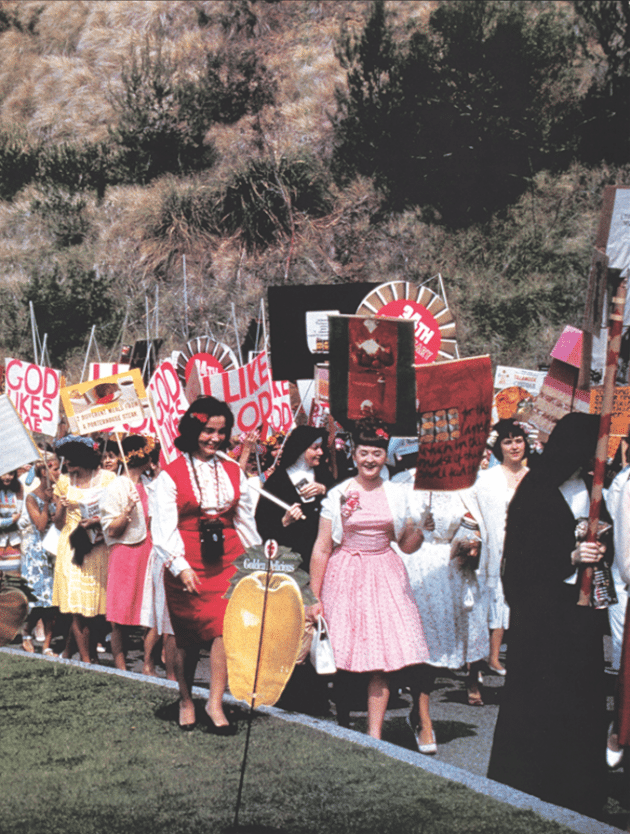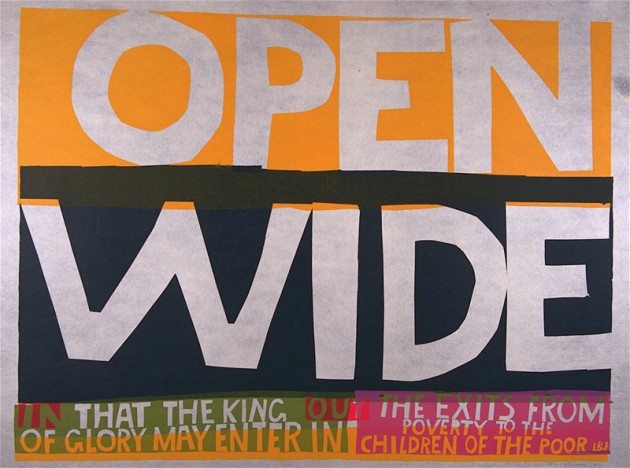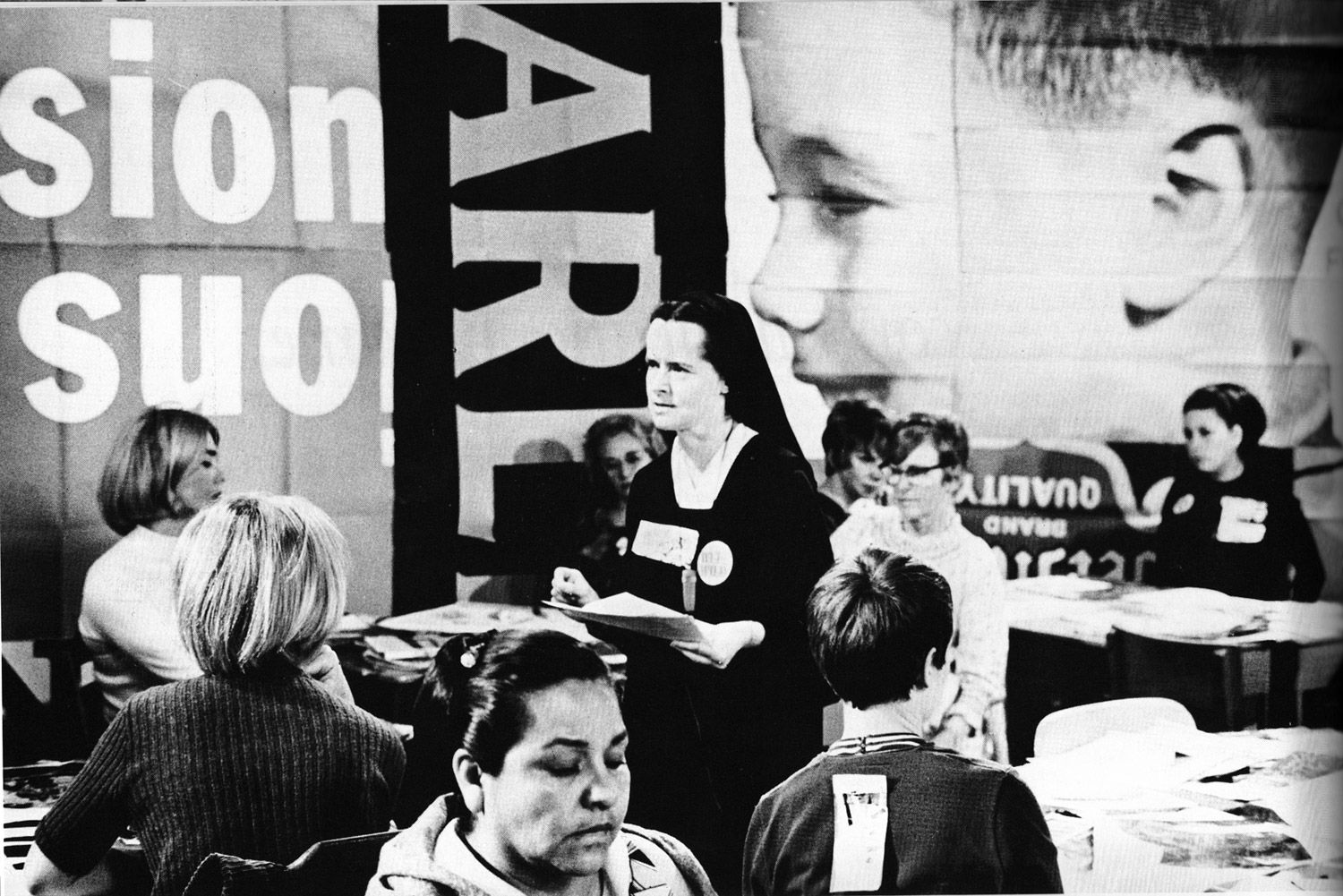“Mother Mary Is the Juiciest Tomato of Them All” — A Retrospective of Nun-Pop artist SISTER CORITA
A retrospective of SISTER CORITA KENT (1918–1986), titled “Let the Sun Shine In,” opens tomorrow at Berlin’s Circle Culture Gallery. A longtime nun in the Sisters of the Immaculate Heart of Mary (IHM) seminary, Corita was a pop artist and educator, making serigraphs in the 1960s and 70s that combined archetypal American consumerist brands with spiritual text, advocating civil rights through an aesthetic-religious disobedience. AARON ROSE, who co-curated the exhibition with SASHA CARRERA, calls Corita the “positive West Coast alternative to Warhol.” 032c sat down with Rose and Carrera this week to discuss Sister Corita’s punk-nun pop art.
Which works have you included in the retrospective?
AARON ROSE: The show is kind of a hybrid. There are 44 works, including the iconic, known pieces as well as certain works that Sasha and I have been attracted to for some time but that haven’t been put into play as much. These include pieces from late 1960s and 70s, when she was making the transition from Pop to a more reductionist approach to imagery. There’ll be things that are new to people, and may even be challenging to them. If they’re familiar with her work they’ll have to change their perceptions of Sister Corita, because she was many things over her 30-year career. Like any great artist, she went through different periods in her work. She wasn’t just a one-trick pony. She started one place and ended another that’s so completely different.
SASHA CARRERA: Sister Corita continually experimented with different techniques, and a lot of this is overlooked by people because they’re so taken by her work from the 60s.
Can you describe what the atmosphere was like when Sister Corita started making her art in the 1950s and up until Vatican II?
AR: The IHMs were a very independent group of women who had come from Spain in the 1800s and had actually dropped their connection with their archdiocese in Spain because California was so different. So they became a canonical order, meaning that they answered directly to the Pope without a hierarchy in between. They were often warned by bishops that they might run into trouble. They were a feisty group of women who were very well-educated and forward-thinking and progressive, and Corita grew up being taught by them. The spirit was of investigation and discovery, rather than this top-down approach, and Corita’s art and teaching was a great exploration of this. She went to every art opening, traveled to New York every year to see what kind of art was being made in the world. She then realized that really religious or sacred things could be found anywhere, and that anything good was also of God. So it changed significantly from this kind of medieval-looking, scriptural, and almost illustrative work to something much broader. But she incorporated text from the very beginning.

Did her work change after she dispensed from the sisterhood in 1968?
SC: I think it had become more humanist way before that. The work shifted significantly, but the Catholicism was still there.
AR: She wasn’t using as many literal references after she left, like iconography of the Church or from the Bible. But although there was an immediate aesthetic shift, it seems like it took another 15-20 years for her to disassociate herself completely from Catholicism.
SC: I think the religious shift really happened in the 60s, when she stopped making such literal work, and began to have this broader view of what religion is. This expansion started and it continued for the rest of her life.
AR: One of the reasons she got into so much trouble with the archdiocese in the 60s was because of her loose interpretation of religious themes. She was getting really out there. There’s a piece which we didn’t include in the show, the tomato piece.
SC: She was incorporating the war on poverty into her work, and in this piece she used a line from a poem her friend Samuel Eisenstein had written: “Mother Mary is the juiciest tomato of them all.”
AR: She made a serigraph of that with a giant tomato that was taken from an advertisement.
SC: The cardinal freaked out about her associating Mother Mary with a tomato. But it was slang: a juicy tomato is like a hot number. Hardly any of those serigraphs survive.
What do you think Sister Corita would think of Pope Francis?
SC: I think she’d like him. I don’t think she’d become Catholic again, because God was a mystery to her. She said her most religious work was what she did at the end of her life for the Physicians for Social Responsibility, which was an anti-nuclear weapons campaign. But I think she would be right in line with what Pope Francis is doing. He practices an activist faith, and that’s what she and her sisters did as well.
For more information about Sister Corita, you can read Momus‘s portrait on the artist and educator for 032c here.
“Sister Corita: Let the Sun Shine In” opens at Circle Culture Gallery on February 22 and is on view until May 10, 2014.
www.circleculture-gallery.com

